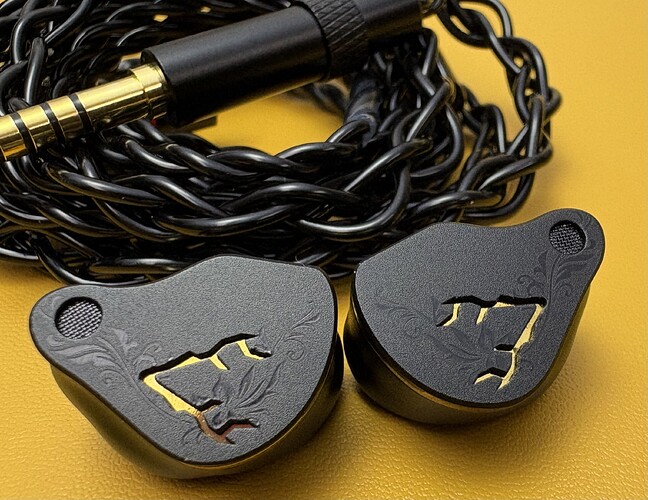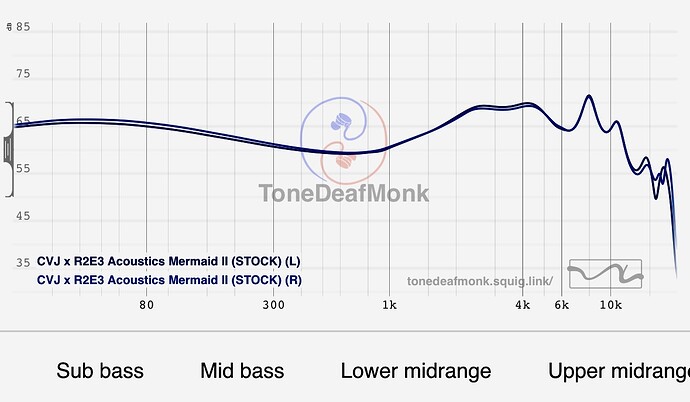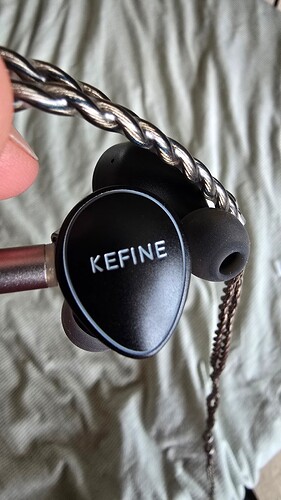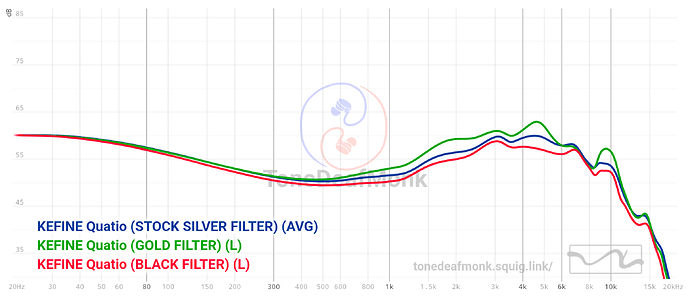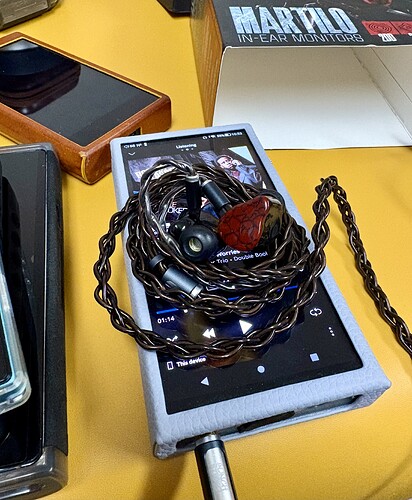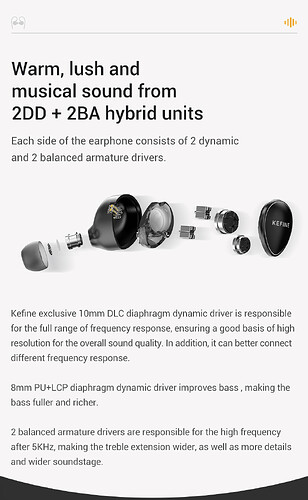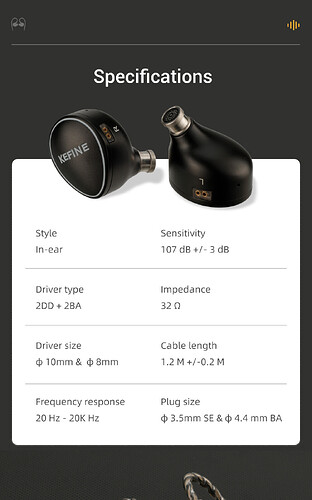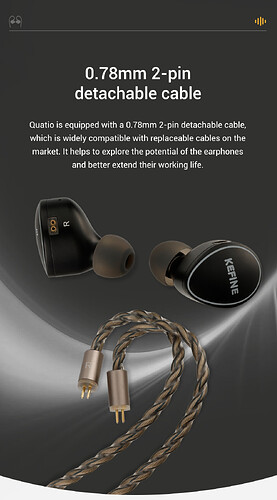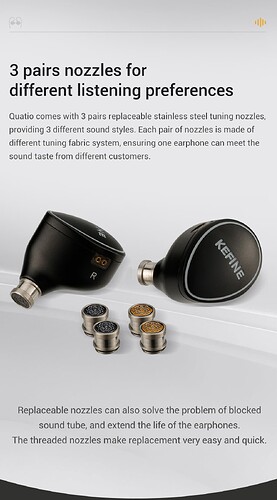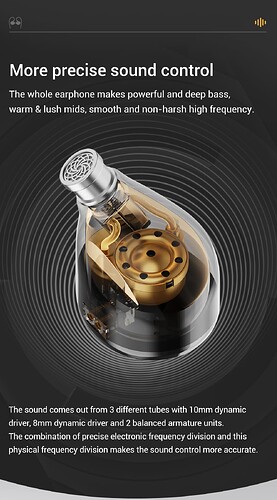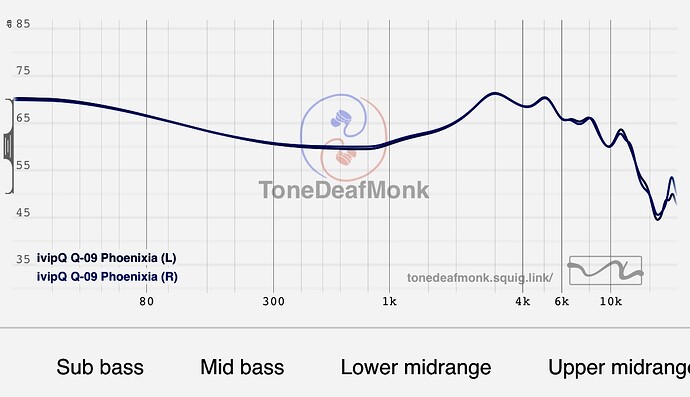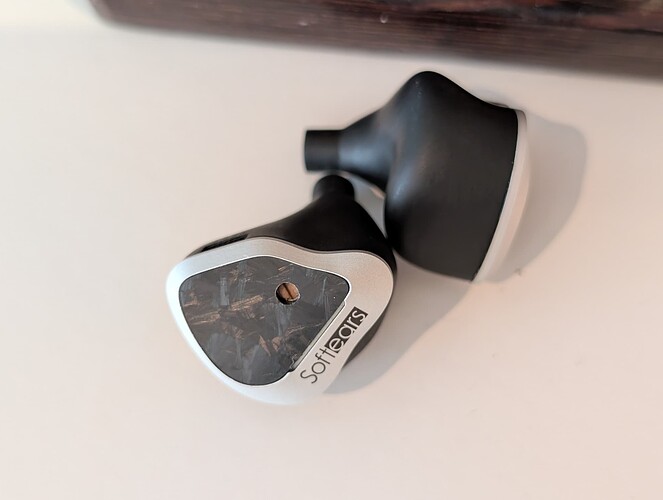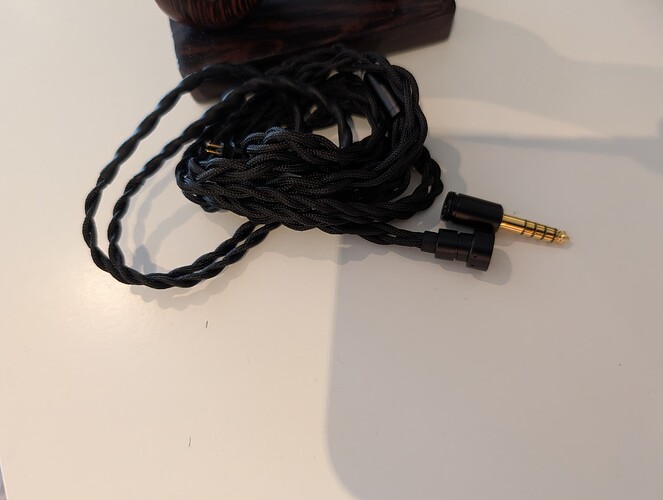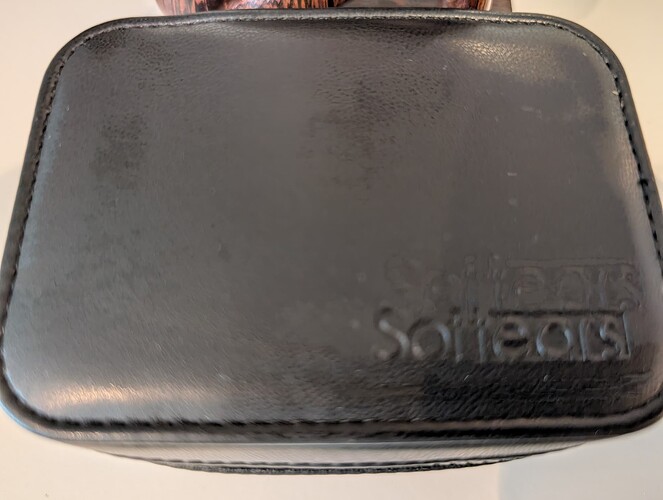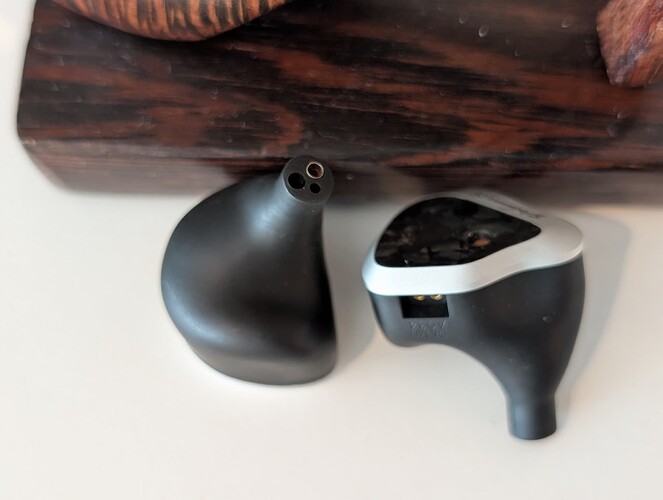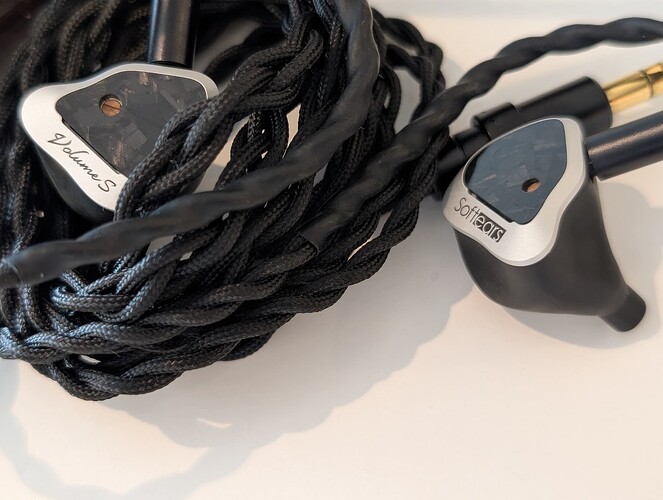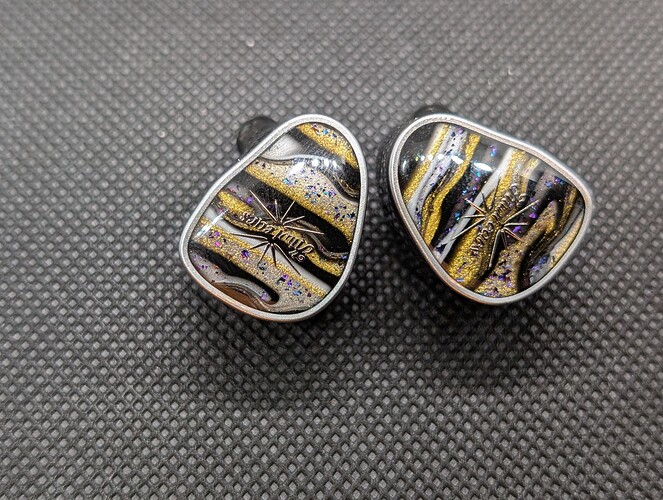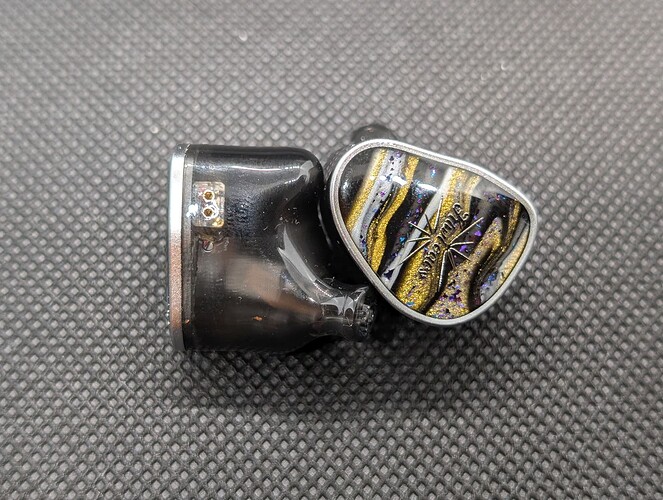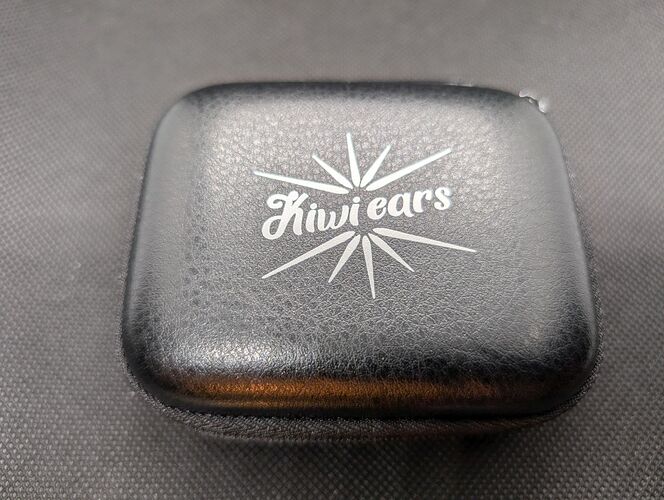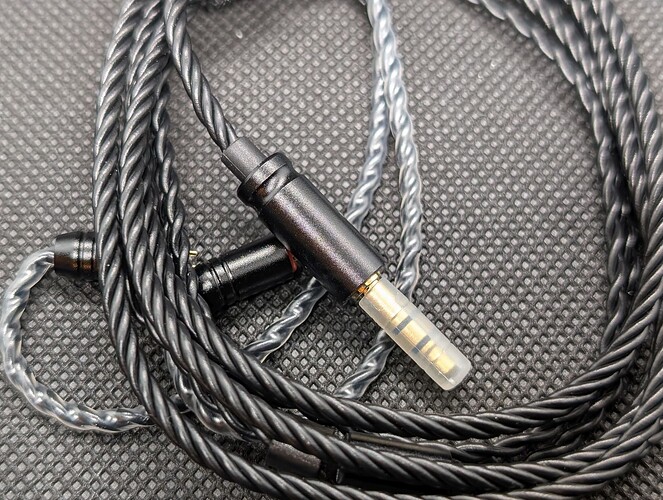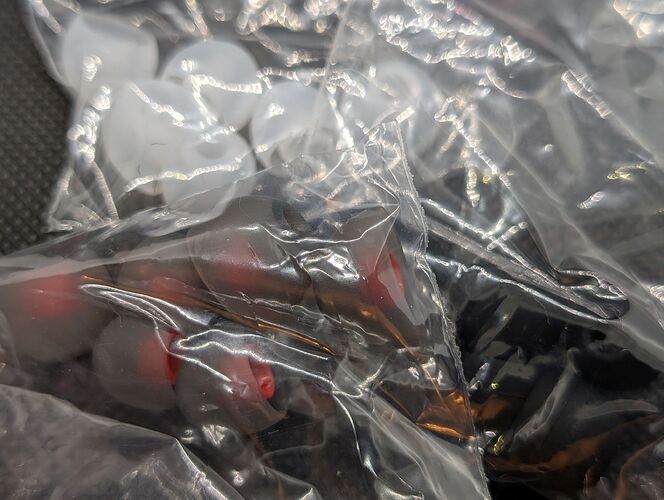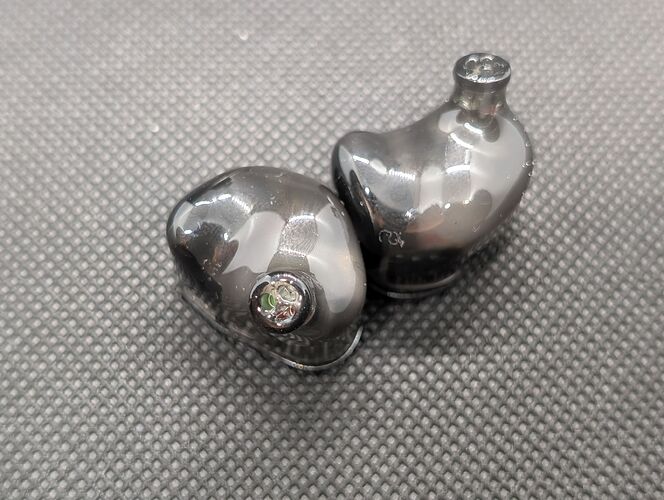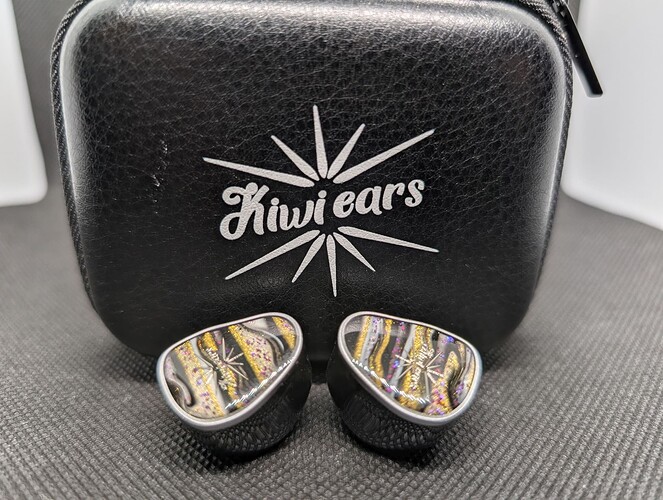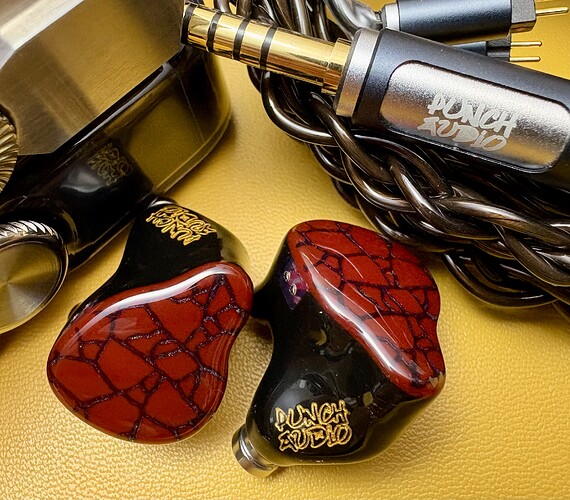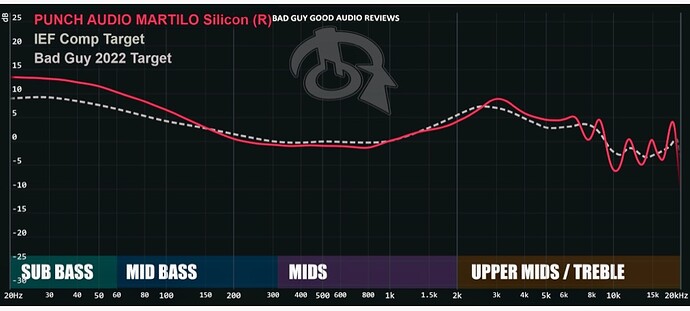CVJ x R2E3 Mermaid II
Single Dynamic Driver $89.00 usd
Beryllium Crystal Diaphragm.
Impedance: 22 ohms.
Sensitivity: 108dB per mW.
Frequency Range: 20-20KHz.
A sincere and appreciative thank you goes out to CVJ HiFi for providing the Canuck Audioholics Review Group with the CVJ x R2E3 Mermaid 2 review unit.
Note: Price was all over the place on AliX when I checked. $84 on the low end and $160 usd on the top end.
I’m calling it $89.00, that seemed to be the more common listed price.
I received only the ear pieces and a rather nice, and decent quality, modular cable.
Build quality of the shells is excellent. Vented CNC aluminum shells with brass nozzles, and a laser cut? faceplate with a brass/gold coloured inlay behind.
Shells are on the medium/medium large size, they fit my ears well, and the “wing” provides a good nozzle angle that supports a good anchor, seal, and comfort in ear.
The silver plated copper cable, as mentioned above, is a nice upgrade level offering. A little stiff but manageable, the ear hooks are quite stiff and could present some comfort or positioning challenges for some.
It’s Modular and comes with 3.5mm and 4.4mm terminations.
I find the Mermaid II to be somewhat source device sensitive, I only rolled a few and found them all acceptable, but, mids forward devices may push the mids energy to the point some might find it excessive.
Sound evaluation is done on the A&K SP2000T set to OP amp mode, 4.4 balanced out. Stock cable terminated 4.4mm. Divinus Velvet extra wide bore tips.
The Mermaid 2 IEMs are aged 100+ hours.
Bass has good texture and good definition between sub and mid bass.
Sub bass has a nice rumble on bass heavy tracks. The sub bass does pervade throughout the head space, but doesn’t overwhelm.
Mid bass has more thump than attack on kick drums, and toms have a fullness to them, more than a definitive attack.
Mid range has good technicals, good clarity, detail, tonality and timbre.
Lower mids are recessed, upper mids and vocals have a nice lift and present somewhat elevated.
Highs have good micro detail, air and sparkle.
This is my one nit pick with Mermaid 2.
The peak around 8k make the upper/ultra highs too prominent and somewhat detached from the otherwise fairly balanced sound signature.
I don’t have sensitivities in this range, so I don’t find them harsh, sibilant, or irritating in particular, just slightly out of place.
The best way I can describe my experience… It’s like sitting in a room full people, groups are enjoying separate conversations around the room, you can hear them, but they blend into the general ambiance, but one person is talking louder than everyone else. Just enough to consistently redirect your attention toward that point in the room.
Head stage, is good.
Nice outside the ears width, and good height top to bottom. I don’t detect a lot of front to rear depth, but the overall presentation is head filling.
Left to right imaging and layering is good. Stage is also open and spacious enough to allow easy instrument and vocals placement.
Summary:
CVJ x R2E3 Mermaid II is a very nice IEM.
Good quality construction, Nice cable, and a very capable single dynamic driver.
The technical capability is impressive, however, it has a balanced, mids lifted and musical presentation, not dry or technical sounding.
I typically don’t read other reviews on IEM that have the opportunity to review.
I skimmed over a couple after completing my listening sessions and notes.
Those I read didn’t mention the 8k peak that I found so noticeable, so that may be something specific to my personal hearing, and hearing preferences.
Not sure why pricing varied so much on AliX when I was confirming pricing, but, at the $85-90 usd mark, I would say the CVJ x R2E3 Mermaid II is a worthwhile consideration based on quality of build, accessories, and sound performance.
Although, at that price, a pocketable carry case would be a nice add.
![]() My music sources:
My music sources:
Qobuz, and, FLAC and DSD files stored on the SD cards of my daps.
My music genre are primarily Rock, Blues, Jazz, Symphonic, Country, Rap, R&B, Pop, Electronic.
Enjoy your music. ![]()
